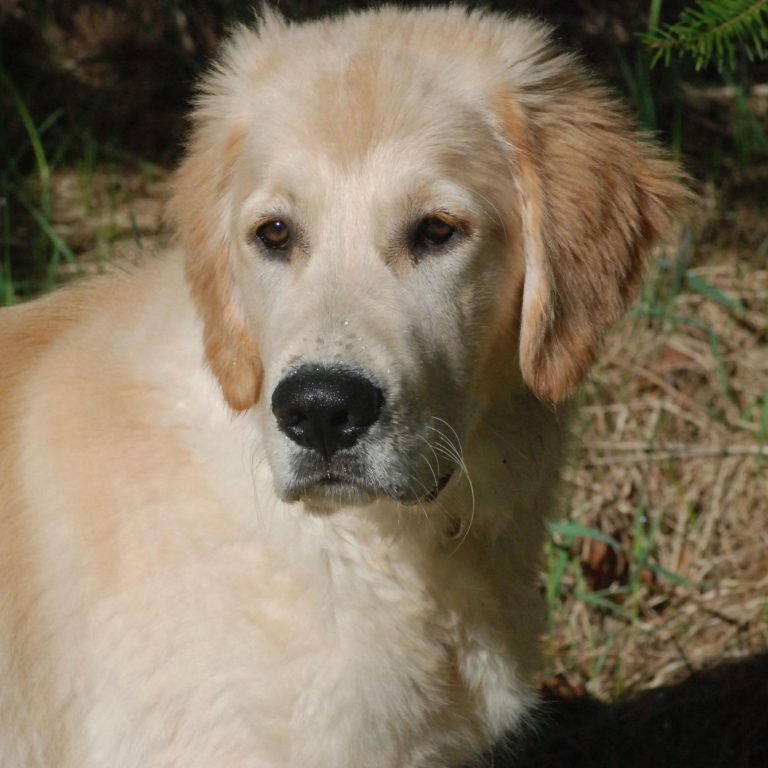
Blog #3
Dogs and their noses
4 May 2025
There’s something about dogs’ noses. During the decades we lived on an acreage our dogs were out the door each morning, their noses down in the grass to read their turf-level Facebook pages and then they were off in all directions.
Those pungent scents would tell the dogs who went by, when, in what direction, human or animal, and whether they were happy, sad, fearful, lost or injured.
The defining feature of a dog’s face is their big, black, wet nose. But, more than just a nose, it is a highly specialized olfactory organ that can have up to 300 million sensory receptor sites compared to just six million in people. This unique structure downloads information to an area of the canine brain devoted to analyzing odours, and which is some 40 times larger than that of humans.
It’s not just the nose itself that’s soaking up scents. Dogs can use their nostrils independently with each one taking in air and processing smells separately to more accurately pinpoint both the source and direction of scents.
Hunter, our Beagle, knew all about scent direction and would be on a coyote trail in seconds, baying his way up the mountain minutes later. Tom, my husband followed him across the hay meadow one summer and yanked him out of a coyote den by his tail just in time to prevent a territorial argument.
In their nasal toolbox is the Jacobsen’s organ, a specialized part of the olfactory equipment located inside the dog’s nasal cavity and opening into the roof of the mouth. Its purpose is to detect chemicals like pheromones and seriously comes into play when a female is in heat. Mike, our Labrador Retriever, knew all about that and could be gone from dawn to dusk for some breeding rewards, a habit that led him on a detour to the vet’s office for neutering.
But now on their sniff list are invasive insects.
Using the efficiency of a dog’s nose, scientists at Cornell University trained a Labrador Retriever and a Belgian Malinois to sniff out the egg masses of spotted lanternflies. These invasive insects from southeast Asia are a serious threat to grapes, apples, hops, and maple and walnut trees. They feed on the sap, weakening the vines and leave behind excreted honeydew that promotes the growth of sooty mold which further weakens the plants.
The researchers found that dogs were better than humans at detecting egg masses in forested areas near vineyards.
According to the University’s press release written by Krishna Ramanujan, the spotted lanternfly was first detected in Pennsylvania in 2014 and has since spread to 18 other states. The insect has yet to make an appearance in Canada, but the Canadian Food Inspection Agency has been watching for any spotted lanternflies since 2018.
“A spotted lanternfly infestation in a vineyard can cause 80% to 100% mortality of the vines in one growing season,” said Angela Fuller, the paper's author and professor in the Department of Natural Resources and the Environment.
A farmer’s protection against that level of damage requires significant increases in insecticide costs in addition to all the time spent sourcing, removing and disposing of egg masses.
Fuller and her colleagues chose 20 vineyards in Pennsylvania and New Jersey known to have lanternfly infestations and mapped out pathways along grape rows and in adjacent forests. People were more efficient at finding egg masses than dogs in the actual vineyards where egg masses laid on the vines and support poles were easily spotted. But in adjacent forests where many spotted lanternflies overwintered dogs had 3.4 times more detection success than humans.
“The dogs find egg masses by smell,” said Fuller. “So, in a very complex environment, it is easier for a dog to smell something than it is for a human to see something that is small and cryptic.”
In the forest, the dogs found 7.6 egg masses per hour versus 6.7 egg masses per hour found by humans. The research was published in the journal Ecosphere, and it illustrated beautifully how the valuable sniffing abilities of dogs can directly benefit farmers and their crops.
© Copyright. All rights reserved.
We need your consent to load the translations
We use a third-party service to translate the website content that may collect data about your activity. Please review the details in the privacy policy and accept the service to view the translations.
